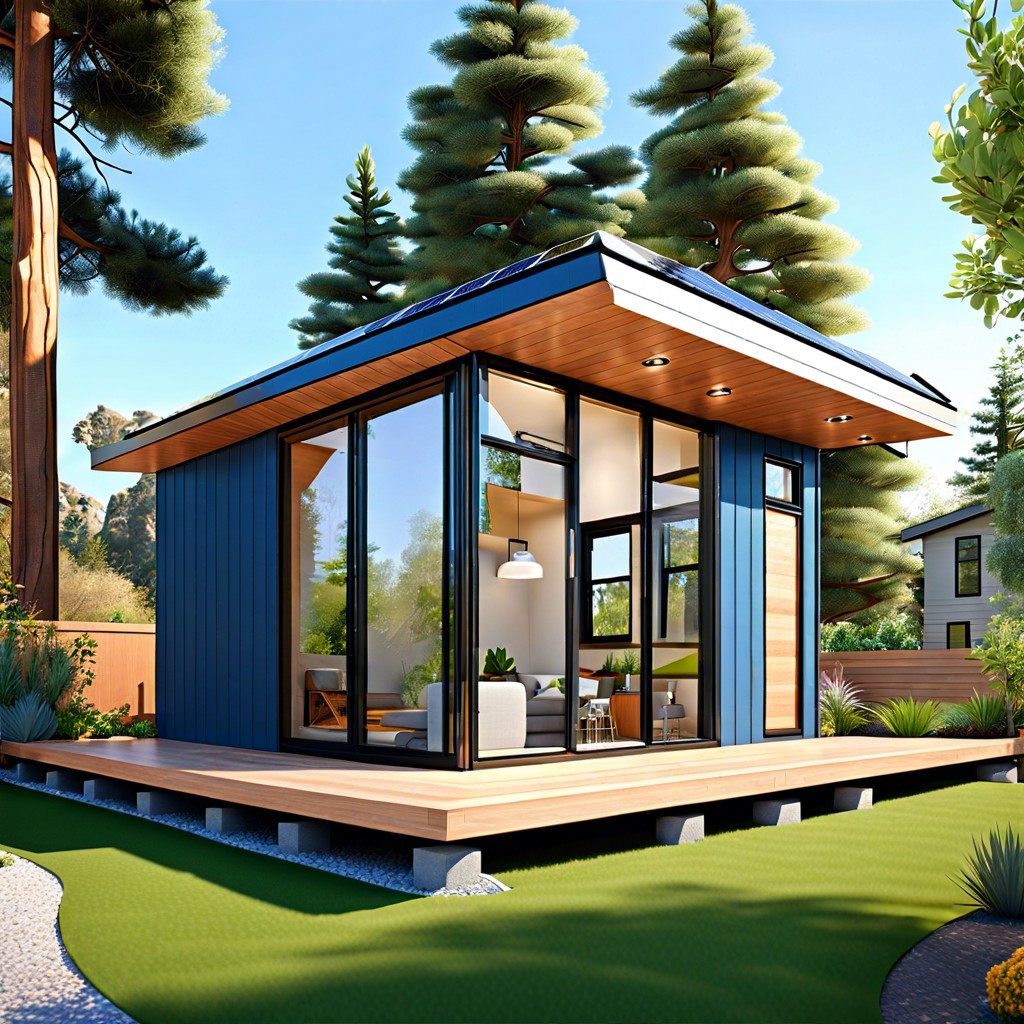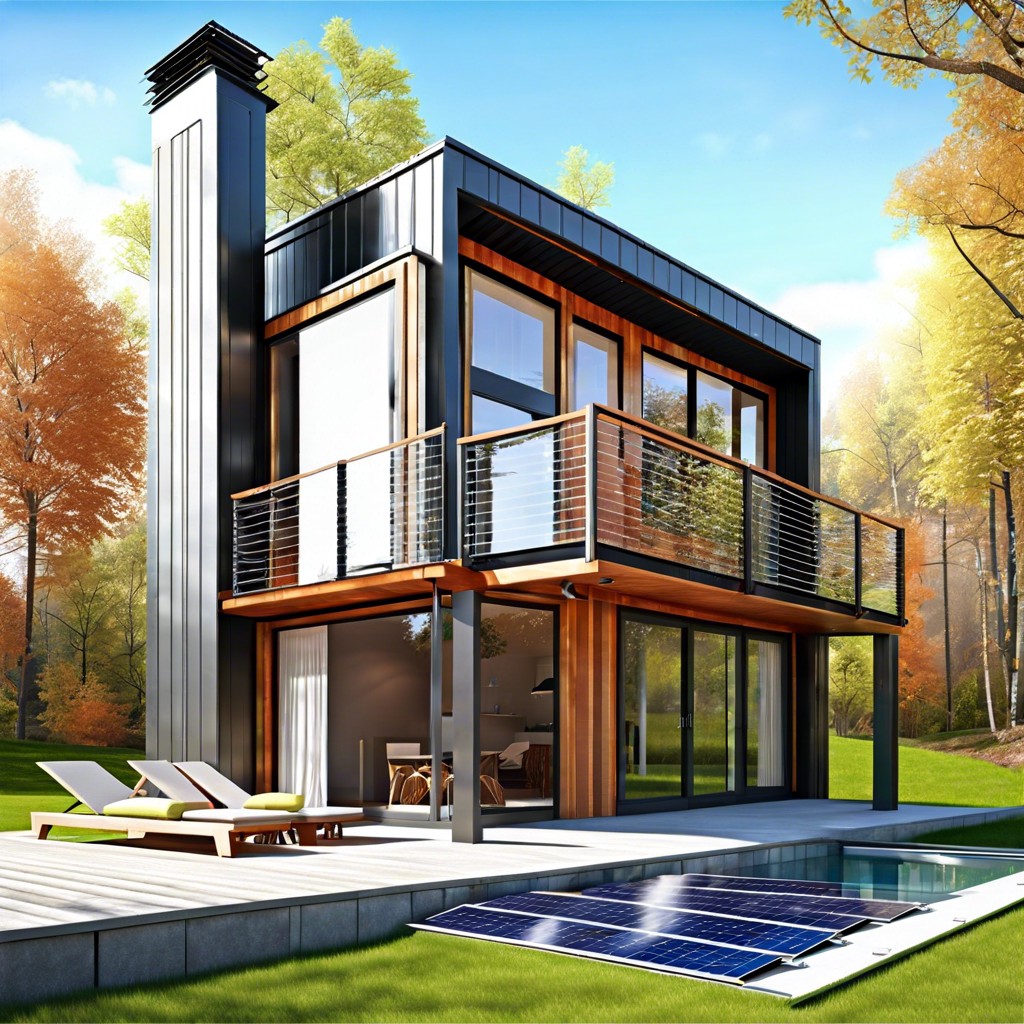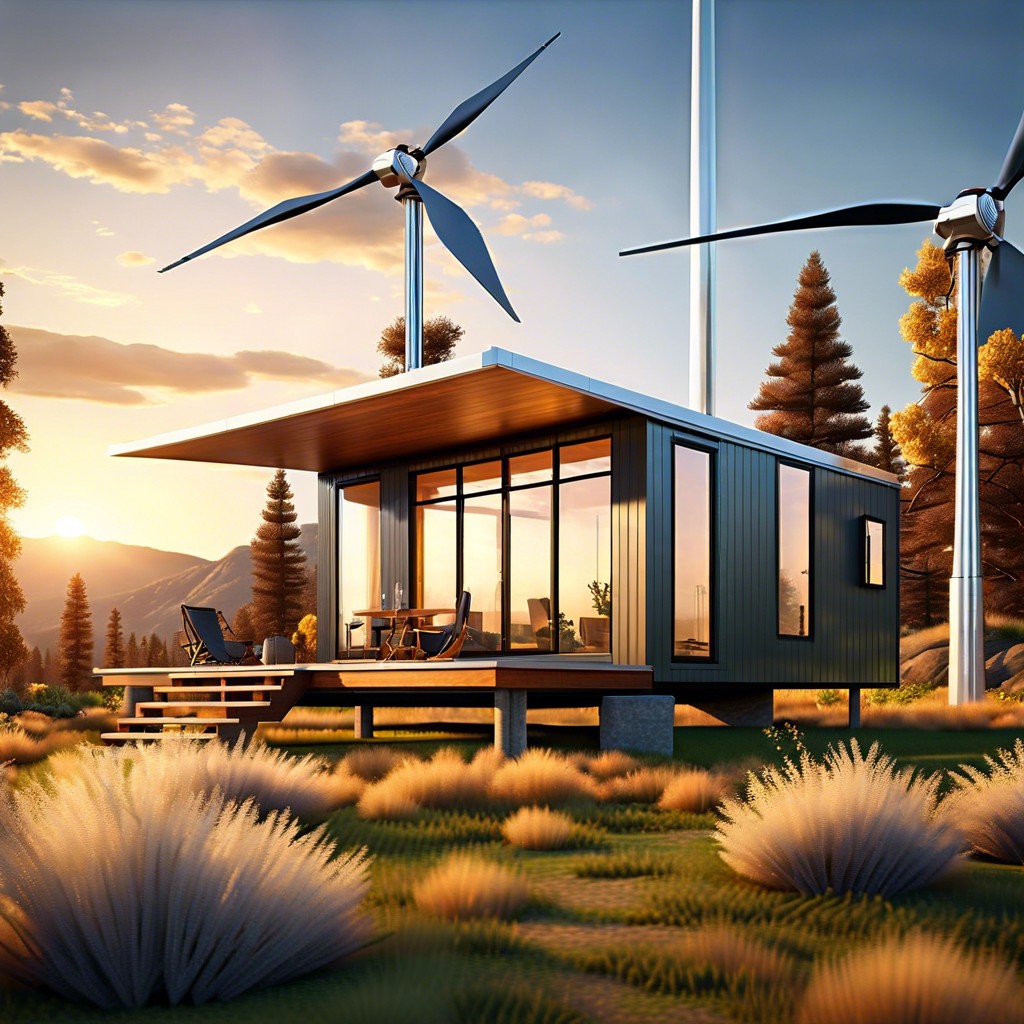Last updated on
Discover how California’s solar requirements for ADU construction ensure energy efficiency and compliance with state regulations.
Key takeaways:
- Solar panel requirements for new ADUs in California.
- Factors to consider when installing solar panels on ADUs.
- Criteria for integrating solar technology efficiently on ADUs.
- Understanding solar capacity requirements for ADUs.
- Estimating installation costs and potential financial incentives for solar on ADUs.
ADU Solar Panel Requirements in California

California leads the charge in renewable energy initiatives, and the inclusion of solar panels on new Accessory Dwelling Units (ADUs) reflects this commitment. State regulations now mandate that most new residential constructions, including ADUs, incorporate solar photovoltaic (PV) systems. This requirement aligns with the California Energy Commission’s (CEC) 2019 Building Energy Efficiency Standards, aiming to reduce the carbon footprint of new buildings and promote energy independence.
Understanding the nuances of these requirements is crucial for homeowners and builders. The size of the solar PV system isn’t one-size-fits-all; it’s tailored based on the projected electrical usage of the ADU. This calculation considers factors like the unit’s square footage and climate zone, ensuring that the system isn’t just an addition but a properly scaled solution for the dwelling’s energy needs.
Moreover, the installation of a solar PV system on an ADU must comply with the local fire codes and any relevant homeowner association (HOA) guidelines. It’s important to note that while upfront costs can be significant, homeowners may be eligible for incentives or tax credits that can defray initial expenses.
If you’re converting existing structures into ADUs, it’s worth exploring if the current main home’s solar system can be upsized to cover the extra energy load. Otherwise, adding an independent system for the ADU might be necessary. With the clear environmental and long-term economic benefits, solar-powered ADUs represent smart additions to California’s housing landscape.
Criteria for Solar Installation On New ADUs
California’s Building Standards Commission and the Department of Housing have set forth specific criteria that new ADUs must meet to integrate solar technology efficiently.
Firstly, the solar system’s capacity should align with the expected electricity usage of the ADU. For smaller units, a scaled-down solar array might suffice, while larger ADUs will require a proportionately larger setup.
Secondly, roof design plays a critical role. The roof must not only support the weight of the solar panels but also be oriented and angled to maximize sun exposure. This optimizes energy production and overall efficiency.
Thirdly, local fire codes also regulate solar panel placement. There must be clear access pathways for firefighters, which could influence the layout of the solar array.
It’s also essential to consider shading from surrounding structures or natural elements. Solar panels need optimal sun exposure; hence, placement is key to ensure minimal shading during peak sunlight hours.
Lastly, compatibility with existing electrical systems is mandatory. The ADU’s solar setup must integrate seamlessly with the grid, and in some cases, additional battery storage systems might be necessary for energy resilience.
Understanding these criteria ensures that new ADU projects in California are not just compliant but also benefit maximally from solar technology’s environmental and economic advantages.
Understanding ADU Solar Capacity Requirements
Navigating the nuances of solar capacity for your accessory dwelling unit (ADU) centers on matching your energy needs with the system’s output. California’s mandate for renewable energy in new constructions, including ADUs, presents an opportunity to harness solar power efficiently.
Firstly, solar capacity is typically measured in kilowatts (kW). The average home solar system ranges from 4 to 8 kW, but ADUs, often being smaller, may require less. Your energy usage, influenced by the size of the ADU and your lifestyle habits, will dictate the ideal capacity.
Secondly, bear in mind that solar panel efficiency has surged in recent years. This means you’ll need fewer panels to meet the same energy demands compared to older systems. High-efficiency panels are particularly beneficial for ADUs with limited roof space.
Additionally, consider the ADU’s orientation and roof design. Ideal solar exposure, free from shade and with a south-facing tilt, maximizes energy generation. If your roof angle or orientation is suboptimal, your system may require a capacity boost to meet your energy needs.
Lastly, collaborating with a reputable solar installer can help you accurately estimate the necessary capacity. They’ll perform a thorough evaluation, considering peak sun hours and potential environmental factors, ensuring that your ADU’s solar system is not only compliant but cost-effective in the long run.
Estimating Installation Costs for Solar On ADUs
The cost of installing solar panels on your accessory dwelling unit, or ADU, will vary based on several factors. Primarily, the size of the system, which is directly related to your energy needs, will be the most significant determinant of the price. A smaller ADU will typically require fewer panels, leading to a lower overall expense.
Additionally, the type of solar panels and the complexity of the installation can influence costs. For instance, higher-efficiency panels may carry a premium but could provide more energy in less space. Similarly, if your ADU’s roof requires structural upgrades or has complex design features, installation expenses could increase.
Bear in mind that while upfront costs can be substantial, solar panels are a long-term investment. You’ll likely recoup your initial outlay over time through reduced utility bills and potential incentives. In California, homeowners with solar installations can take advantage of the federal Investment Tax Credit (ITC), which allows you to deduct a portion of the solar costs from your taxes, as well as any state-specific incentives that can provide additional financial relief.
To get a clearer picture of potential expenses, it is advisable to gather quotes from several licensed solar installers. These professionals will take into account your ADU’s specific energy requirements and design a system that is both efficient for your needs and cost-effective. Remember, choosing a reputable installer is crucial, as proper installation ensures maximum energy production and minimises future maintenance costs.
Integrating Solar Into Existing Structures With ADUs
When considering the addition of solar panels to an existing structure with an ADU, careful planning is paramount to ensure both efficiency and compliance with state regulations. California’s push for renewable energy means that integrating solar isn’t just eco-conscious but also increasingly a standard in home design.
One of the primary concerns is roof orientation and tilt, as these factors greatly influence solar energy production. It’s important to have a professional assess if the existing roof can support the added weight of solar panels or if reinforcements are necessary. For roofs that aren’t suitable, ground-mounted systems can be an alternative, though they require more space.
Another aspect to consider is the electrical system of the existing structure. Older homes may need an electrical panel upgrade to handle the additional solar power. This can involve rewiring and other modifications to ensure safe and effective operation.
The installation process should also take into account the future energy needs of both the primary residence and the ADU. Anticipating these needs helps in determining the appropriate size and capacity of the solar array, avoiding under or over-building the system.
Remember too that shading from trees or other buildings can impact solar efficiency. It’s wise to evaluate the surroundings and, if necessary, trim trees or consider the installation angle to minimize shading.
Lastly, homeowners should look into local incentives and rebates that can make the upfront investment in solar more affordable. This financial landscape is always evolving, so staying current with the latest information can lead to considerable savings.
Table of Contents




